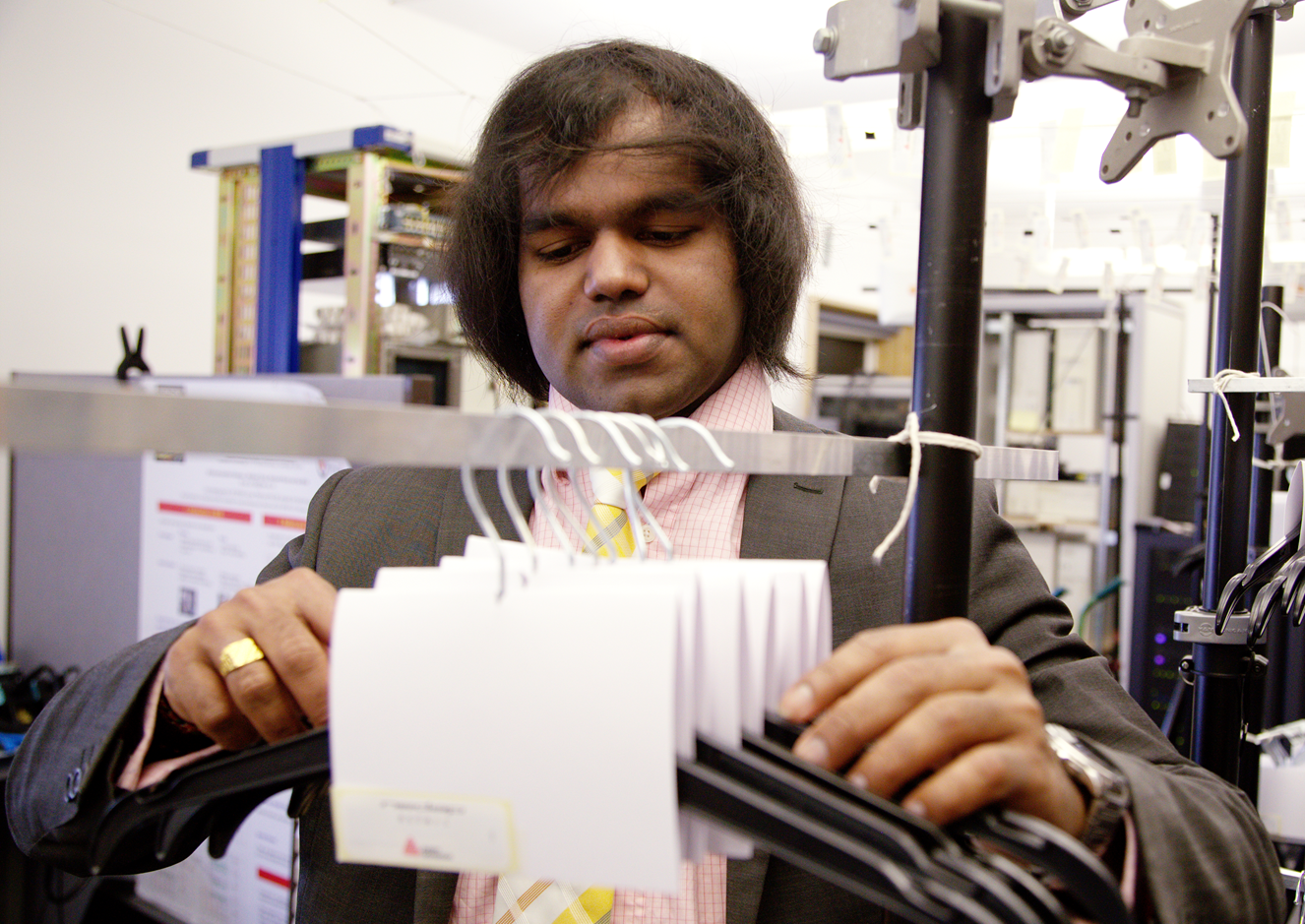The RAEng Engineers Trust Young Engineer of the Year award is a new competition recognising outstanding achievement in early-career engineering. Each of the five winners receives a £3000 prize.

The overall winner is Sithamparanathan Sabesan of Girton College, Cambridge, whose work on accurate battery-free tracking of RFID chips led to him co-founding a spin-out company, PervasID, of which he is chief executive. His technology is likely to find application in tracking merchandise within factories and warehouses, and luggage around airports. Sabesan previously won the RAEng’s ERA Foundation Entrepreneurship Award in 2011 with PervasID cofounder Michael Crisp, and the EPSRC’s ICT Pioneers Connected World Award in the same year. Sabesan also wins the Sir George Macfarlane Medal for excellence in the early stage of his career.
The other winners are Ben Britton, a lecturer in the Department of Materials at Imperial College, for work on the materials science and engineering of alloys useful in aerospace, nuclear and energy applications; John Collins of Arup, whose work on suspension bridges has been key to vital repairs on the Forth Road Bridge and maintenance on the Humber Bridge; Collins won the IET’s Sir Henry Royce Medal for Young Professionals in 2012 and CE Yorkshire & Humber’s Smeaton Award in 2015 for his work on replacing the bearings on the Humber Bridge’s main span. Also recognised this year were Orla Murphy, the current IET Young Woman Engineer of the Year, an acoustics engineer at Jaguar Land Rover who is working on perceptions of 2D and 3D sound systems and is an active STEM ambassador; and Paul Shearing of UCL, a chemical engineer whose research on X-ray imaging of energy materials has been useful in understanding why lithium ion batteries, such as those in the Boeing 787 Dreamliner, can catch fire or even explode.




Red Bull makes hydrogen fuel cell play with AVL
Formula 1 is an anachronistic anomaly where its only cutting edge is in engine development. The rules prohibit any real innovation and there would be...